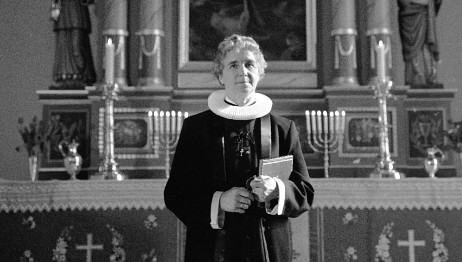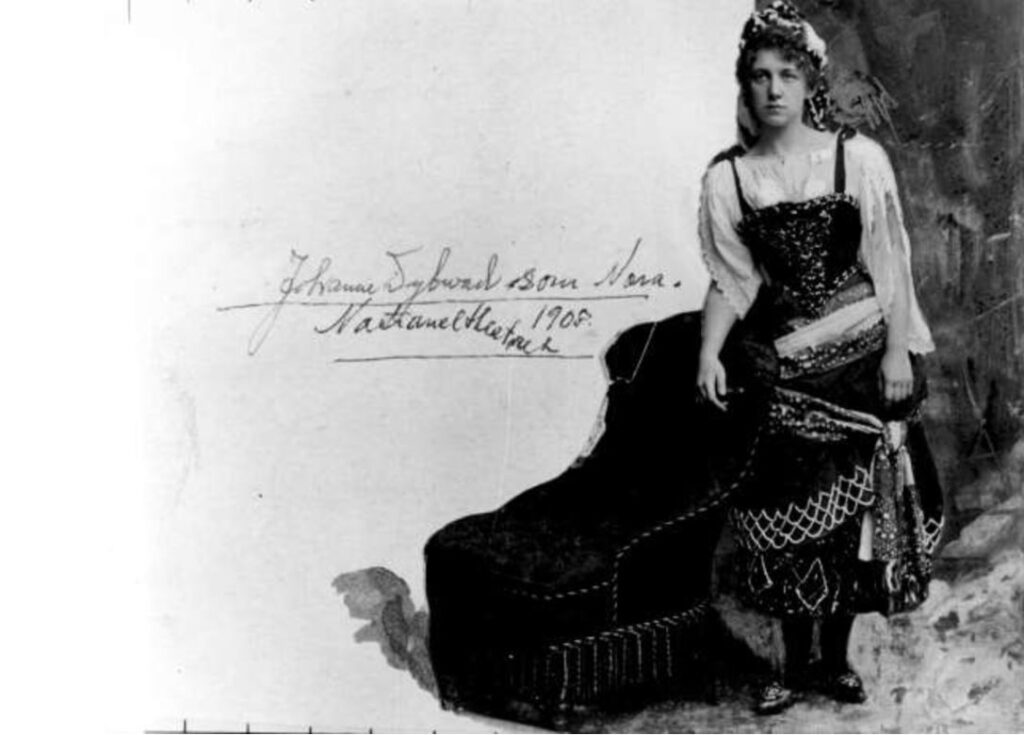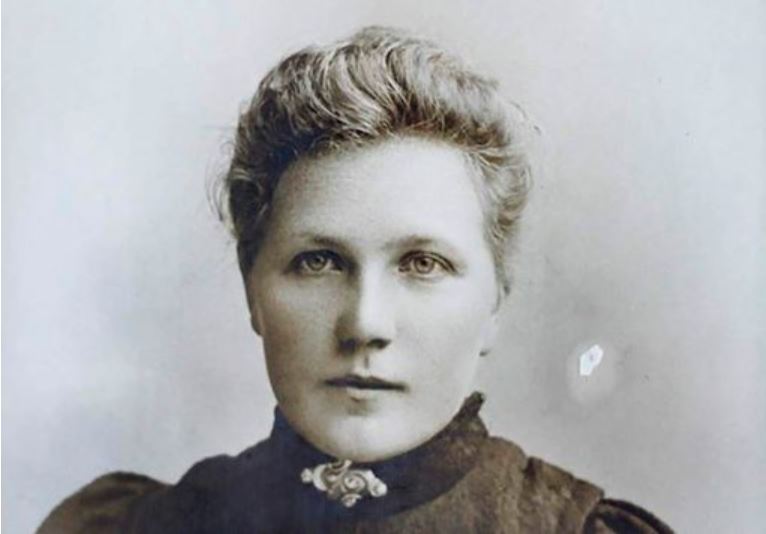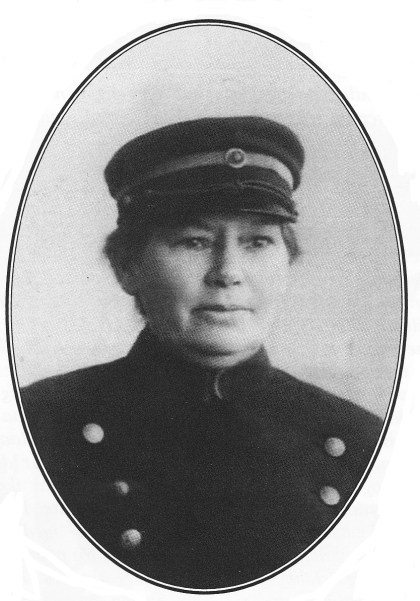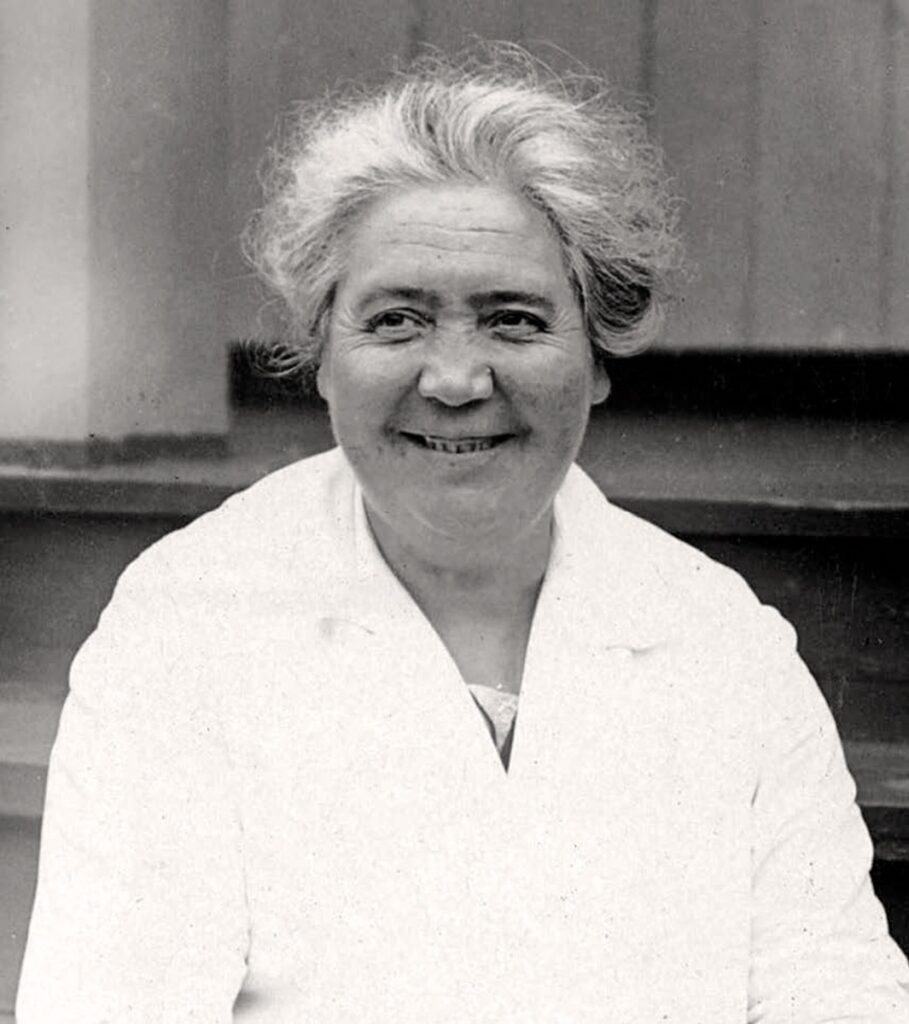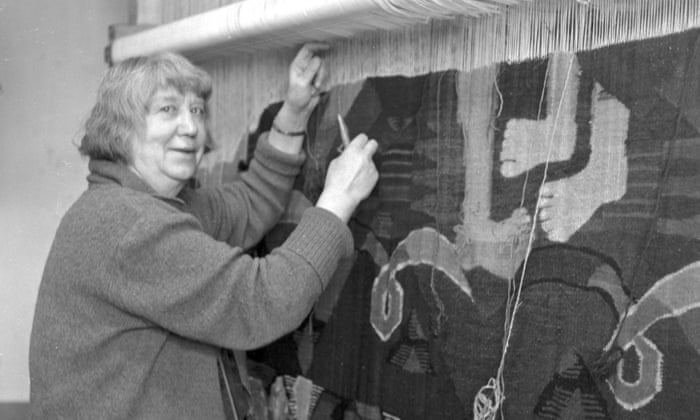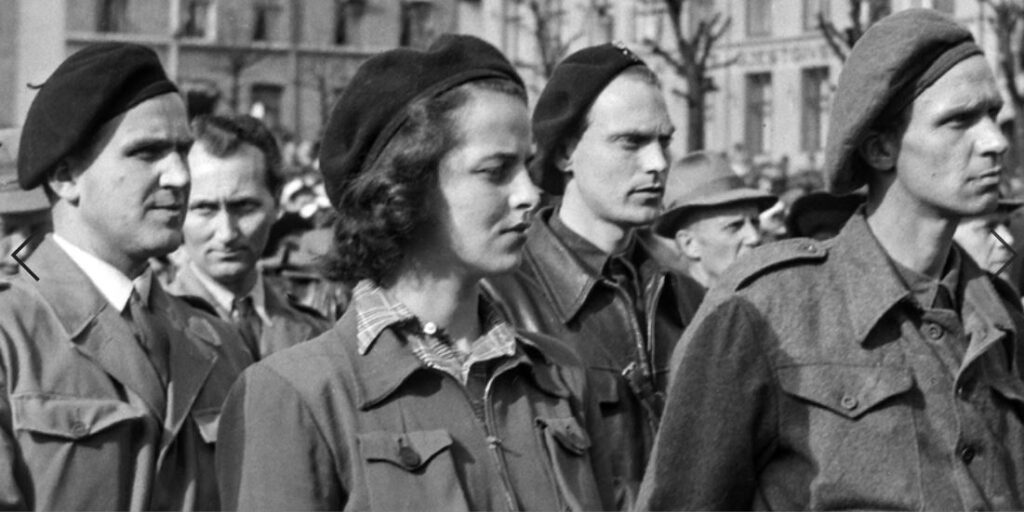Ahead of International Women’s Day 2021, journalist Cheri Amour wades through the archives to uncover some of the pioneering women who have paved the way for gender parity and put Norway on the map when it comes to equality.
In terms of gender equality, who was ahead of the rest the world? Many would say the Nordic countries, with their commitment to corporate board diversity and official gender legislation. Today, Norway is one of the most equal countries in the world but its push towards inclusion runs deep, with a history of pioneering women affecting change, dating right back to the 1800s. From the “skirt regime” of a small fishing town in the 1920s to the black gospel singer involved in the international fight against racism, here are 19 Norwegian (s)heroes to get to know this International Women’s Day.
1. Norway’s first female Member of Parliament, Anna Rogstad
Activist and politician, Anna Rogstad laid the foundation for so many with her groundbreaking progress in women’s rights.
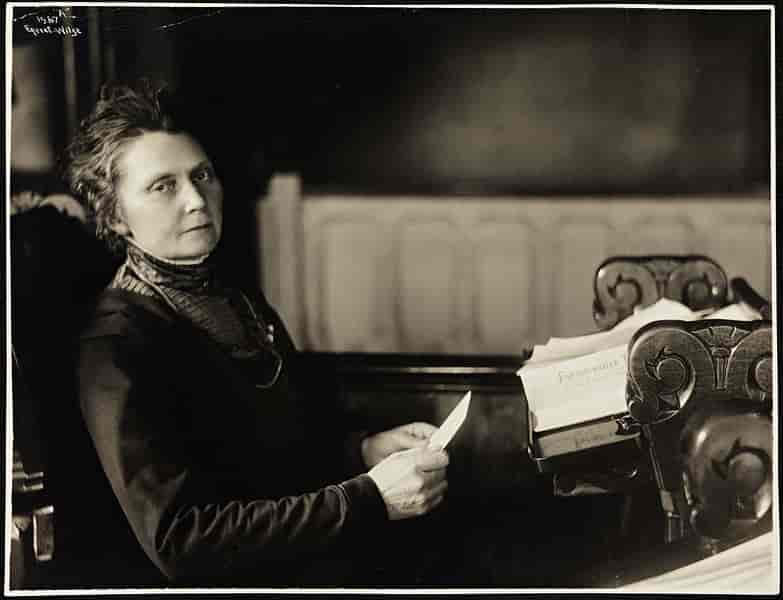
Anna Rogstad at the Norwegian Parliament, 19th March 1911. Photo: Anders Beer Wilse/ National Library of Norway
Born in Søndre Land in Oppland County, Rogstad was one of the founding members of Nordsk Kvindesagsforening (Norwegian Association for Women’s Rights) and Kvindestemmerets Forening (the Women’s Suffrage Association) in 1884 and 1885 respectively. It was during her time in the Frisinnede Venstre (the Conservative-Liberal Party) that she made her mark on history though, becoming the first woman in Norway’s national assembly in 1911 – some years before women obtained the right to vote.
Anna Rogstad was a pioneer for women in politics and will be honored with a statue on Eidsvolls plass in Oslo, by the Norwegian Parliament, a prominent site for political expression. The contest to decide who designs and makes the statue will be decided this year.
2. Stage actress and director, Johanne Dybwad
A few years after the launch of Rogstad’s Women’s Suffrage Association, another forward-thinking woman was exercising her voice on the stages of Oslo.
Stage actress Johanne Dybwad made her debut at the Christiana Theater in Oslo in 1888 and was applauded for her “truth and naturalness”. In the early 1900s, she staged her first play Pelléas and Mélisande by Maurice Maeterlinck, which she directed and performed the lead role. Dybwad continued to stage foreign classics throughout the 1920s and had over 200 roles, including Norwegian classics and Shakespeare.
For a woman who was so intrinsic to the birth of the Norwegian art scene, it seems fitting to mark her decade-spanning career nationally. In 1967, Dybwad became the first Norwegian stage artist to appear on a national stamp. A bronze statue of her was revealed in front of the National Theatre in Oslo, and the area is named after her: “Johanne Dybwads plass”.
3. Norway’s first female mayor, Aasa Helgesen
In the same decade that Dybwad was importing foreign classics from the continent, another area in Western Norway was establishing itself on the geographical map of gender equality. When Utsira, a small fishing island, separated from Torvastad in 1925 and became its own district, discussion turned to their first independent election.
It had been ten years since the first general election in which all women were permitted to vote, after the Norwegian Parliament changed the law in 1913, allowing both men and women to vote. Relocating from Kristiania, where she had trained, midwife Aasa Helgesen moved to Utsira to take up a post in the village. She was quickly propelled into local politics after the man to be elected turned down the town mayorship.
Consequently, in 1926, Aasa Helgesen became the first female mayor of Norway, despite the backlash from the local media at the time who dubbed it the “skirt regime”. The novel result received a far more enthusiastic reception internationally with Helgesen receiving congratulatory telegrams from women’s organisations in the US and Mexico. In 1994, a bust of Aasa Helgesen was placed outside Utsira Town Hall.
4. Norway’s first female police officer, Elise Mathilde Henriksen
Back in the early 1900s, Helgesen wasn’t the only woman facing resistance from her male counterparts. Mathilde Henriksen was one of twelve siblings. Her status as one of the responsible elders of the group made her the perfect hire as the manager of a women’s home in the Bærum commune and later at the rescue home for women in Bergen.
Henriksen was hired as a policewoman in 1910, focusing on issues regarding women and children in addition to female prisoner reformation. A few years later, she was subjected to a smear campaign by a colleague with whom she had an affair. Initially suspended, the colleague was eventually sentenced to prison and Henriksen received compensation for the damages occurred from the case.
Mathilde Henriksen continued to dedicate herself to the police force until she retired in 1932, serving over twenty years in the service.
5. Norway’s successful cheesemaker, Synnøve Finden
The famed Norwegian dairy company Synnøve Finden takes its name from the two key components that make up its 100-year history. Synnøve, the entrepreneurial young businesswoman behind the brand, and Finden, the small village in western Norway where it was founded.
Inspired by the cheesemaking craft she had learned from her mother, Synnøve started working in the Finden Dairy when she was only 18 years old. The village soon proved too small for Synnøve’s aspirations. She moved to Oslo where she met Pernille Holemn and together they opened a small cheese factory in Oslo.
Now a successful business making millions a year, the company produces cheese, butter and juice, with farms in Alvdal and Namsos. It launched its yellow cheese in 1996, and Norway’s iconic brunost (“brown cheese”) in 1997. Despite being nearly a century old, Synnøve’s story proves how the women of Norway have pioneered business models that have become national institutions.
6. Textile artist with political messaging, Hannah Ryggen
Around the time that Synnøve was setting up Finden’s cheese production, and before World War II broke out, Malmo-born textile artist Hannah Ryggen moved to Norway.
Based in Ørlandet – a remote region in Norway’s Trondheimsfjord, Ryggen taught herself the various processes of tapestry making. Everything from the carding and spinning of wool to concoctions of locally-sourced natural dyes created from insects, plants, lichens, and bark.
Unsurprisingly given the era, Ryggen’s work charts some of the biggest political events of the time. The rise of fascism (Ethiopia, 1935), the Nazi occupation of Norway (6 October 1942, 1943), and media coverage of the Vietnam War (Blood In The Grass, 1966).
Despite being one of Scandinavia’s most outstanding artistic figures of the 20th century, she remains largely unknown elsewhere but her impact on modern art is woven deep into Norwegian history.
7. Norwegian speed skating pioneer, Laila Schou Nilsen
Many still cite Laila Schou Nilsen as the greatest sportswoman in Norwegian history. Quite the reputation considering she actually ended her career back in 1961.
But during that time, she won a total of 101 national championship titles across every sport to which she turned her hand, including 83 in tennis, 10 in alpine skiing, four in speed skating, and four in handball, for good measure.
Even at a young age, Nilsen was breaking barriers for young women in sport. In 1933, still not 14, she completed the unofficial national cross-country 5km skiing championships for Oslo. She ended up crossing the finishing line almost six minutes before her closest opponent.
8. Norway’s first female priest, Ingrid Bjerkås
Before she became the first female priest in Norway, Ingrid Bjerkås’ sermons had been heard in the offices of some notorious figures in occupied Norway during the war.
Bjerkås penned letters to the Norwegian military officer and Nazi collaborator Vidkun Quisling accusing him of treason and demanding he withdrew from politics. She also wrote to Nazi leader Josef Terboven protesting the crackdown on Norwegian students following the 1943 University of Oslo fire. After the war, she taught at a Sunday school and was ordained by the Bishop of Hamar in 1961.
Despite half of Norwegian bishops now being women, there are still male priests across the country who refuse to work with female priests. Bjerkås’ positioning back in the early 1940s has even paved the way for members of the LGBT+ community to take on the title. Oslo ratified the first openly gay priest, Rev Jens Torstein Olsen, back in 2000.
9. Norway’s celebrated resistance member, Eva Kløvstad (née Jørgensen)
During the darkest hours of the Nazi occupation of Norway women continued their courageous revolt. In fact, one such woman was central to the resistance work in the city of Hamar during World War II.
When war first broke out in April 1940, Eva Kløvstad (née Jørgensen) was still a high school student. But, in 1943, she got a job as a stenographer and accountant at the Transport Office in Hamar. It is here that she began resistance work, embezzling petrol marks that were given to resistance fighters involved in refugee traffic in Sweden.
Under the cover-name “Jakob”, Eva Kløvstad was the de facto leader of Milorg D-25 in the Southern part of Norway, which had about 1,200 underground soldiers. She was integral in the work of rebuilding the Milorg district 25 organization, after lawyer Christian Juell Sandberg, who was later shot by the Gestapo, entrusted her to work alongside him as secretary.
Eva Køvstad died in 2014, aged 92 years old. There has been talks about making a movie about her accomplishments during the war.
10. Heroic merchant navy sailor, Margit Johnsen Godø
Continuing our wartime accolades, Margit Johnsen Godø – nicknamed ‘Malta-Margit’ for her service on a convoy to Malta in 1942 – is another example of the heroism of Norwegian women during World War II.
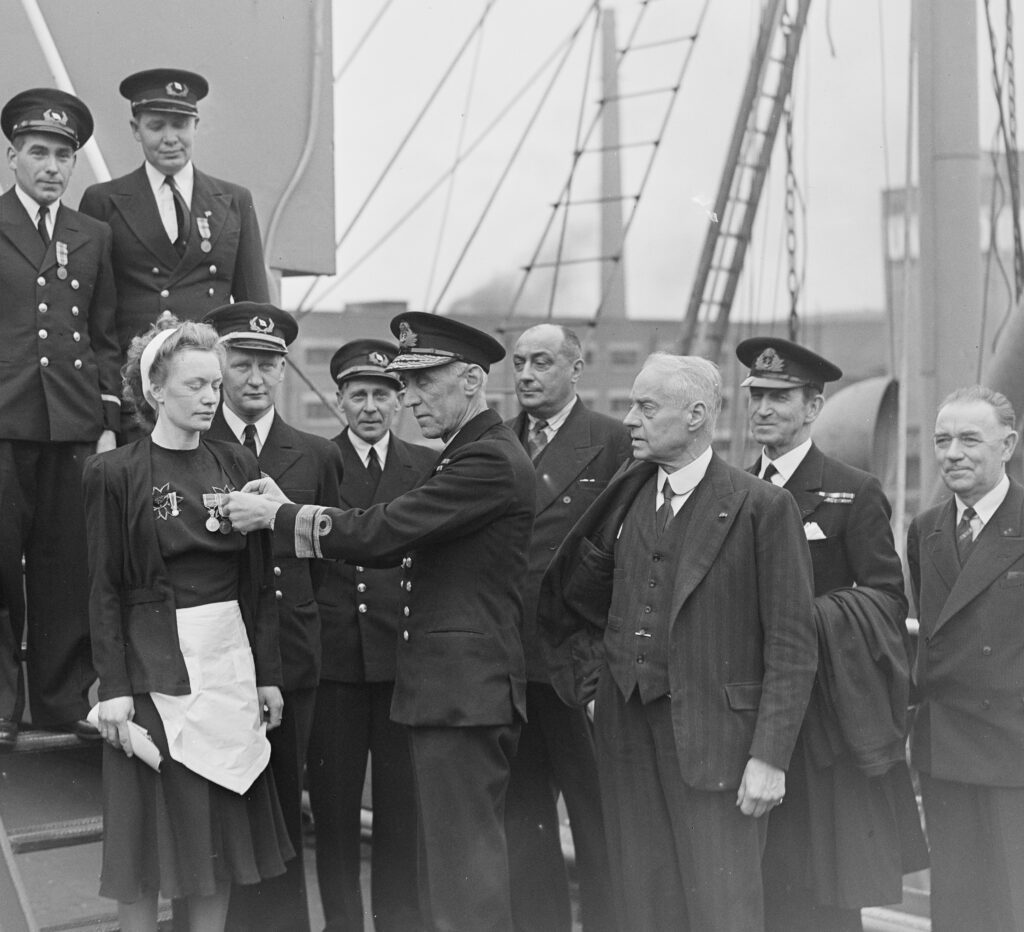
Margit Johnsen Godø receiving the British Empire Medal from admiral J. S. Ritchie. Photo: Riksarkivet
Speaking to Captain Albert Toft when she was 28 years old, Godø said, “If my boys are going to die, I want to be there with them. It cannot be harder for me to die than it is for them.” It’s this unwavering determination on board the convoy that saw her pick up the St. Olav’s Medal with Oak Branch making her the only woman to have ever received the oak leaf award.
Godø continued her work in the Norwegian merchant fleet until 1960. In 2013, a memorial bust of Johnsen was erected in the harbour of her hometown of Ålesund on the west coast of Norway.
11. Journalist and foreign correspondent, Lise Lindbæk
Commonly known as Norway’s first female war correspondent, Lise Lindbæk was a freelance journalist and foreign correspondent who reported back home on fascism in Italy and notoriously covered the Spanish Civil war.
She grew up in Copenhagen and later in Roskilde but after the death of her father, journalist Johannes Peder Lindbæk, she and her mother, writer Sofie Aubert, moved to Kristiania, Norway, in 1920.
Lindbæk was a multilingual raconteur who spoke seven languages. These skills led her to become a useful friend to Norwegian poet Nordahl Grieg and the American novelist Ernest Hemingway. In the Second World War, she was in Paris during the German invasion in the summer of 1940. Unable to return to Norway, she eventually reached the United States. She worked as a journalist for the United Nations from 1945 to 1949.
Parallells can be drawn from Lise Lindbæk’s fascinating observations from the frontlines to those of contemporary author and journalist Åsne Seierstad, who delivered accounts of everyday life in war-torn Kabul and Baghdad (her book Two Sisters dealt with Islamist radicalisation). For a long time, Seierstad was the only Norwegian journalist in Afghanistan and thus became an important historical eyewitness, one that was key to informing Norwegian opinion.
12. Prolific children’s books author, Anne–Cath Vestly
Despite being one of the most beloved authors of children’s literature, Anne-Cath Vestly originally studied acting at Studioteatret in Oslo. But it was when she began writing in the early 1950s that she became a household name.
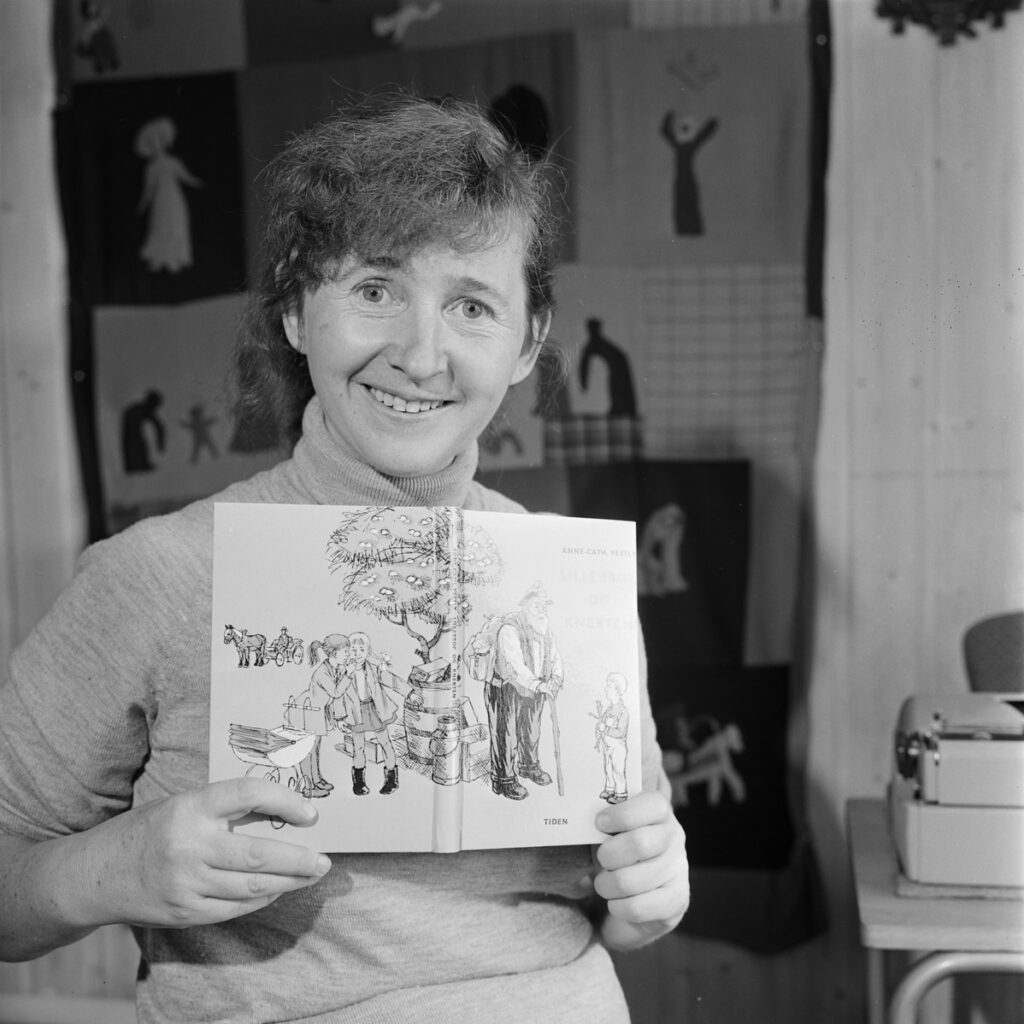
Anne-Cath Vestly with one of her many books. Photo: Archive photo.
She made her literary debut in 1953 with Ole Aleksander Filibom-bom-bom. Lillebror, Mormor, Aurora, Guro, Kaos, and Ole Aleksander are recurring characters in her books, which were ahead of their time in their exploration of questions about the nuclear family and gender roles. Her Aurora book series, for example, depicted a stay-at-home dad. Vestly notoriously caused outrage when she appeared on the radio to share her stories about childbirth and sexual reproduction.
She is best known for her Eight Children series, about a grandmother who shares many adventures with a flock of children. In 1977, a film adaptation of the series was released — titled Grandma and the Eight Children in the city — with Vestly herself playing the role of the grandmother.
The timeless children’s author was appointed the most prestigious of Norwegian Honours, a Knight’s First Class of the Order of St. Olav, in 1992.
13. Norway’s living jazz legend, Karin Krog
In 2014, composer, singer, and folklorist Karin Krog celebrated a mighty 50 years since her first release as a solo artist.
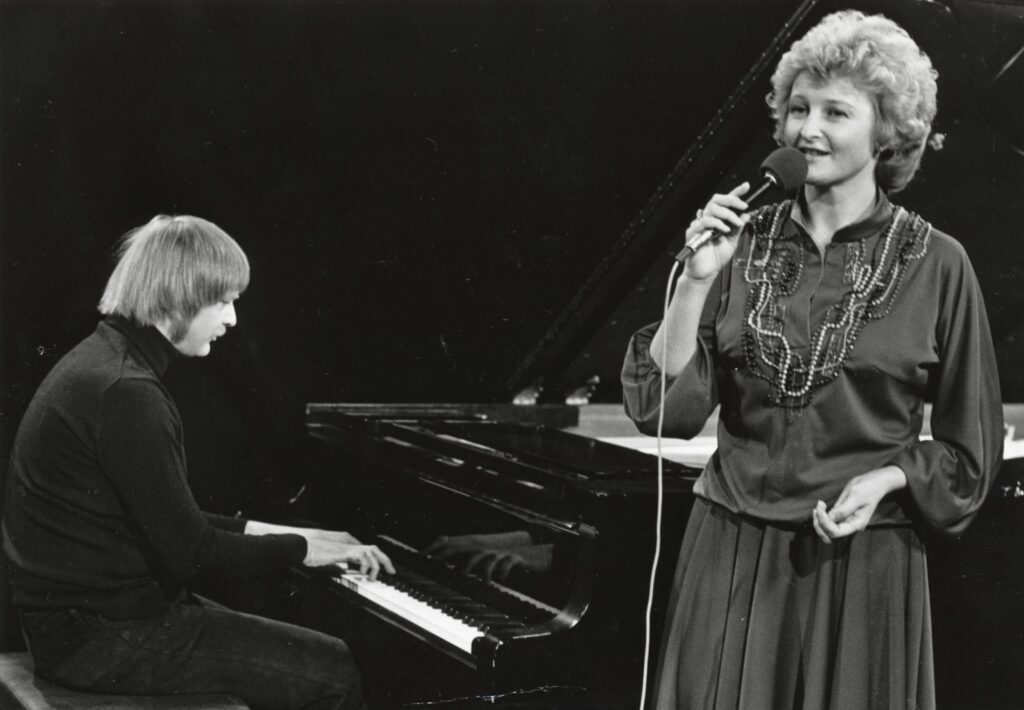
Karin Krogh. Photo: Kraftmuseet
Already well-established on the touring circuit from her time performing with pianists Kjell Karlsen and Einar Iversen, Krog was a natural choice on the bill for the first Molde International Jazz Festival in 1961. In the years to follow, Krog would receive a Norwegian “Grammy” (Spellemannsprisen). The European Jazz Federation also elected her “Female Singer of the Year” in 1975.
Karin Krog even found time to form her own record company, Meantime Records. She has continued to tour and release countless compilations and records, appearing with the Bergen Big Band and John Surman. And, even nearing her 70th birthday, Marc Medwin in All About Jazz commented on how Krog was “as energetic and as thoughtful as ever”.
14. Gay rights activist, Karen-Christine Friele
With the Women’s Liberation Movement already in full swing by the early 1970s, gay rights activist Karen-Christine Friele was propelled by second-wave feminism’s aim to abolish sexism. Widely known as “Kim”, Friele has been a central activist in the Norwegian gay rights movement since the early 1960s.
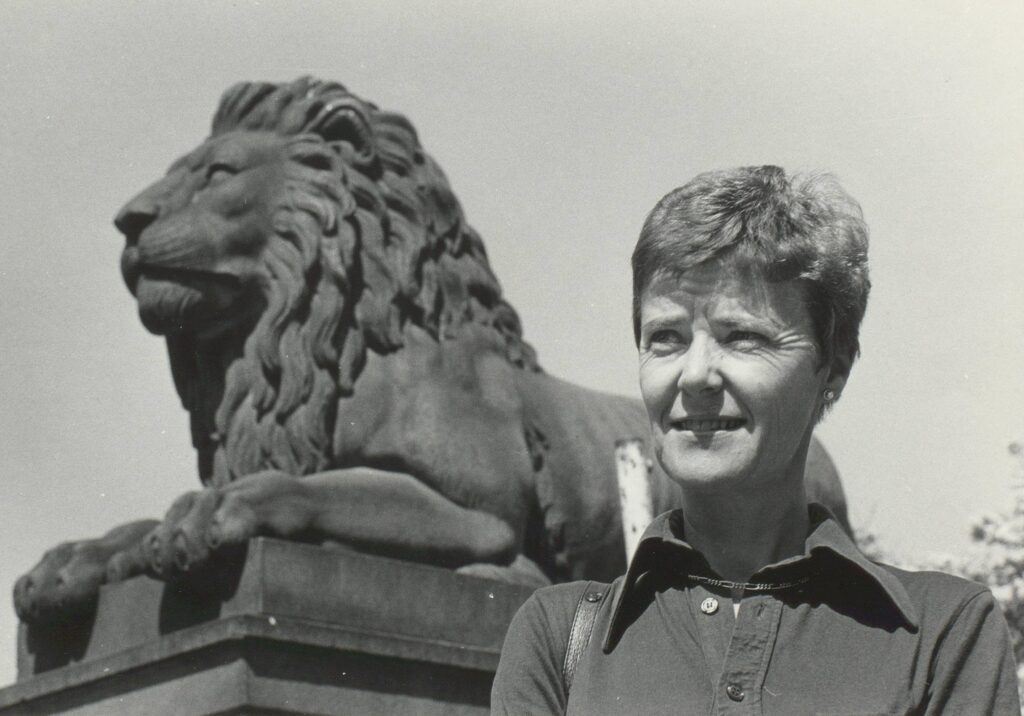
Kim Friele in front of the Norwegian Parliament in 1975. Photo: Ivar Aaserud/ VG
In 1963, Friele joined the Det Norske Forbundet (The National Association for Lesbian, Gay, Bisexual and Transgender People), now known as FRI, The Norwegian Organization for Sexual and Gender Diversity, and soon became the elected leader of the organisation. She played a key role in lifting paragraph 213 of the Norwegian penal code which make sex between men illegal in 1972. She was also instrumental in the removal of “homosexuality” as a physiological diagnosis in 1978, and the historic implementation of anti-discriminatory law in 1981, Norway becoming one of the first countries in the world to explicitly include sexual orientation in the legislation.
Not one to shy away from groundbreaking societal moments, she and her partner of almost 20 years, Wenche Lowzow, became one of the first couples to enter a civil partnership in Norway in 1993 (the law that she had championed came into effect on 6 August of that year).
“Kim” Friele has written several books on gay and human rights, and was appointed a Knight 1st Class of the Order of St. Olav in 2000.
15. American-Norwegian gospel singer, Ruth Reese
As the race riots in the UK continued in the 1980s, there was one woman in Norway using her voice to share and raise understanding of black culture. Alabama-born singer Ruth Reese lived in Norway, after making visits to the country during her European tours.
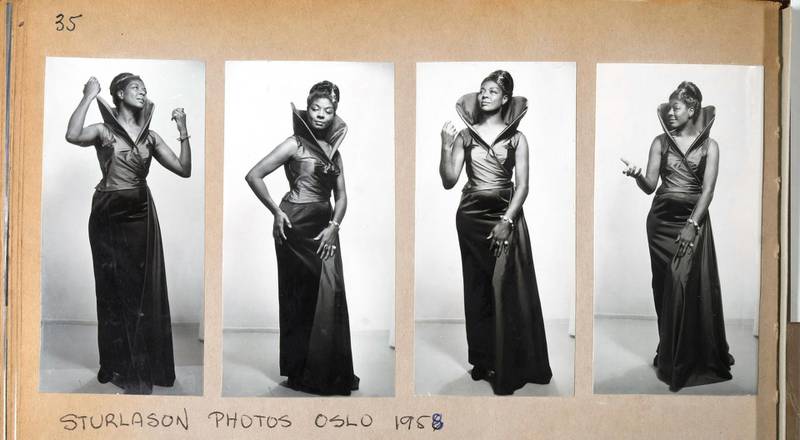
Ruth Reese. Photo: Sturlasons photos
For several decades, she committed herself to increasing Norwegians’ understanding of the history and music of the African-American population and was actively involved in the international fight against racism. Known as “The Black Rose”, she sang classical music, spirituals, gospel, and blues, performing both in churches and in more profane surroundings, such as the summer concerts at St. Hanshaugen in Oslo.
Reese wrote two books in Norwegian, one of which was printed in English under the title, My Way: An Autobiography (1987). In the book she acknowledged that her activism had affected her career, but was unapologetic for speaking for those who could not “express their despair.”
Ruth became an inspiration for many immigrants that arrived in Norway during the 1960s and 1970s; she started the Foreign Women’s Group in 1979 and participated in the opening of The Norwegian Centre Against Racism in 1983. She died on stage 25th October 1990 while speaking at a gathering being held in her honour by SOS Rasisme.
16. Norway’s first female PM, Gro Harlem Brundtland
Gro Harlem Brundtland had to appear on this list: she was the first woman to become prime minister of Norway, back in the early 1980s. She was also the youngest person to hold the office.
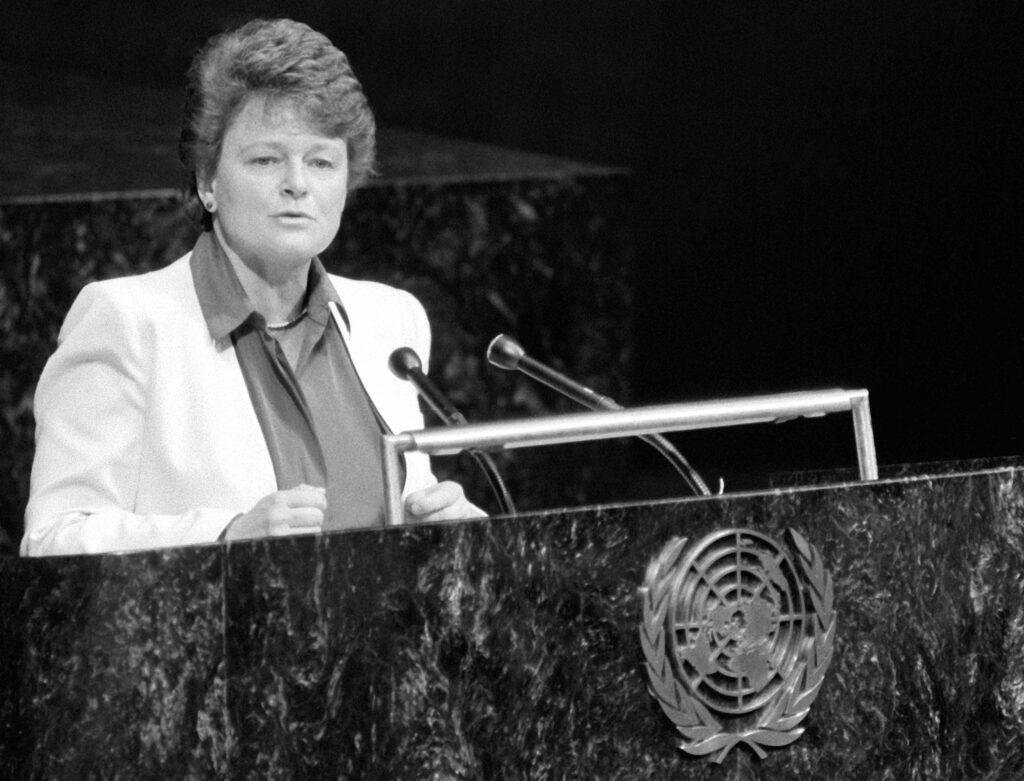
Gro Harlem Brundtland speaking for the United Nations in 1987. Photo: UN Photo.
During her career, the former PM led the Labour Party three times to victory, making huge shifts in environmental sustainability and women’s rights. Brundtland is also a former director-general of the World Health Organisation (WHO).
It’s not surprising to hear then that an upcoming TV drama series Power (Makta) is in the making about Brundtland’s prominent role in Norway’s history. Created by seasoned writer Johan Fasting (Home Ground), the 12-part series will star actors Silje Storstein (Witch Hunt, Young & Promising) and Kristin Grue (Beforeigners, The Machinery) who both came up with the idea. Behind every great man, as they say…
17. Award-winning documentary maker, Deeyah Khan
Twice BAFTA-nominated filmmaker and activist Deeyah Khan risks it all to make thought-provoking documentaries that will change minds.
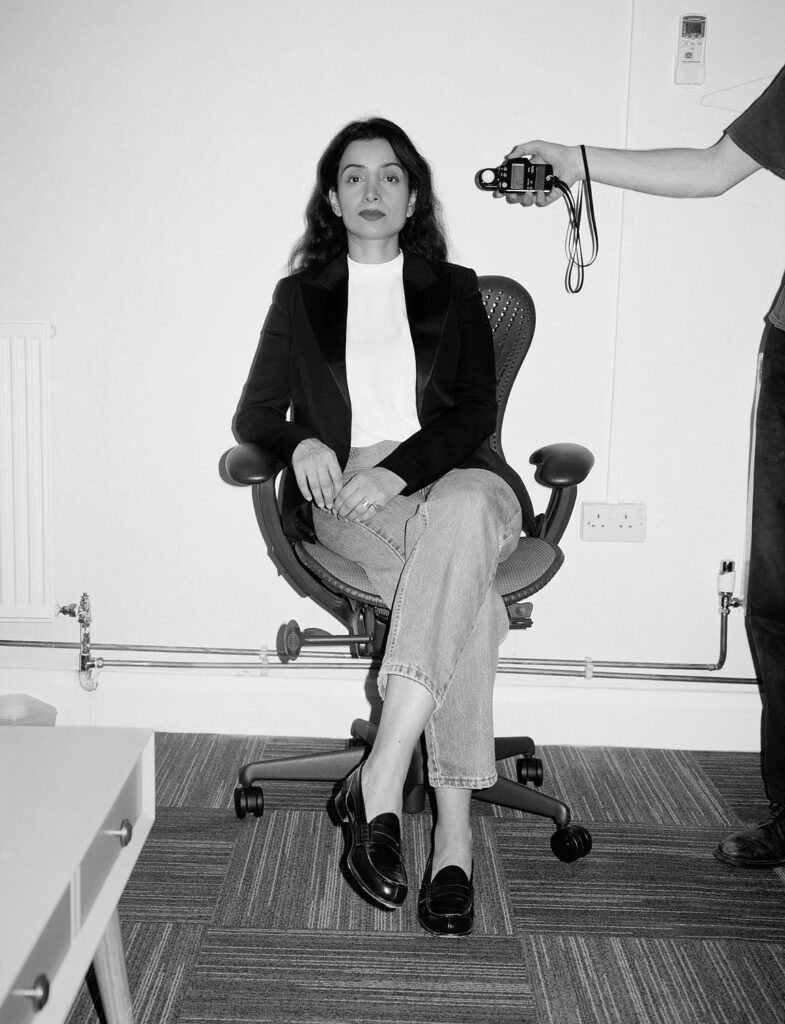
Deeyan Khan. Photo: Angelo Pennetta
In 2010, Khan set up Fuuse, an Emmy and Peabody award-winning production company. The media and arts company puts women, people from minorities, and third-culture children at the heart of telling their own stories. Her aim, she says, is to “create the space for empathy, dialogue, and better understanding, leaving less room for stereotypes”.
Deeyah Khan has made six documentaries to date; all have been shown on ITV in the UK as part of its Exposure series. In 2016, Khan became the inaugural UNESCO Goodwill Ambassador for Artistic Freedom and Creativity.
18. Sámi singer and musician, Mari Boine
Norway is home to the most Sámi in the world, with the majority of settlements located in Northern Norway but also as far south as Trøndelag. And Sámi heritage is alive in everything from modern architecture to cutting-edge design, and, of course, music.
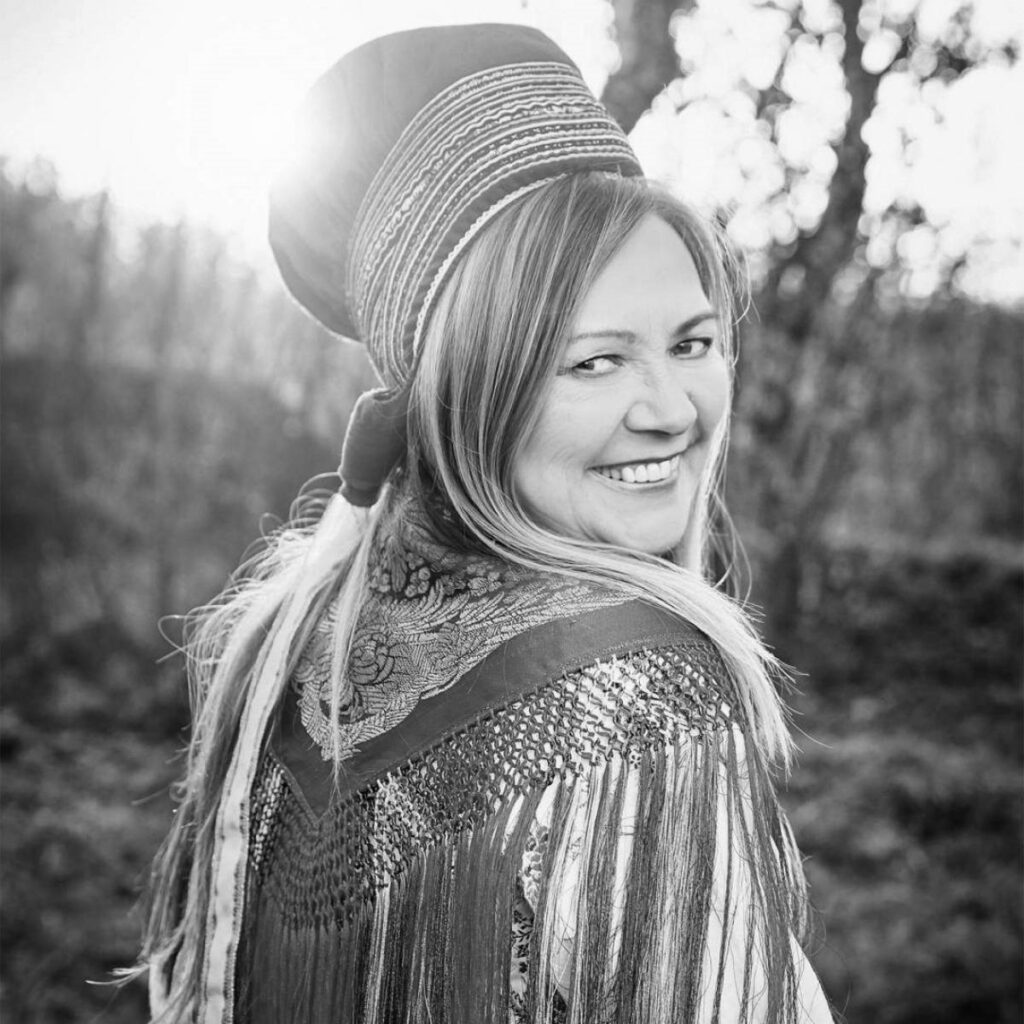
Mari Boine. Photo: Gregor Hohenberg
Emerging as one of the leading advocates for the indigenous people of the Norwegian Arctic, Mari Boine grew up wanting to “become Norwegian and forget everything” about her Sámi roots and language. But her musical career has developed in parallel with her own acceptance of her roots and her embrace of the language that she wanted to forget. The singing style on some of her older records was inspired by traditional books and herding songs.
The songwriter’s lyricism is rooted in her experience of being a minority (Boine famously turned down an invitation to perform at the 1994 Winter Olympics in Lillehammer because she didn’t want to be the token minority at the ceremonies) and her evolving commitment to her Sámi heritage has been commended.
Mari Boine was appoint a knight of first class in the Royal Norwegian Order of St Olav for her artistic diversity in 2009.
19. Norway’s national football captain, Maren Mjelde
Bringing us up to date, Maren Mjelde (captain of the women’s national football team) made headlines in 2017 when she and Stefan Johansen (captain of the men’s national football team) signed a historic agreement that would bridge the pay gap between the two teams – ensuring that the men’s and women’s national football teams receive equal pay. ️
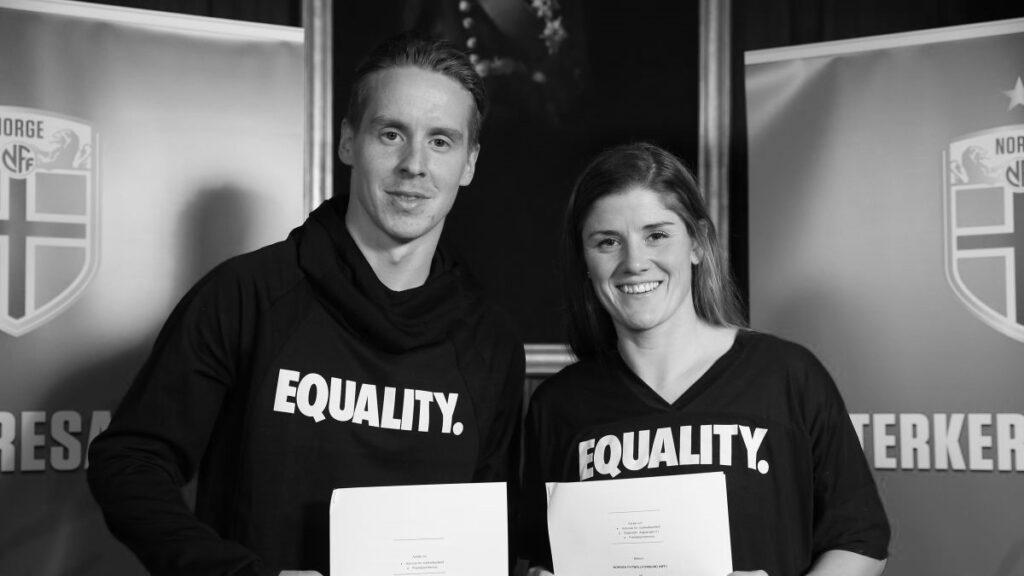
Maren Mjelde and Stefan Johansen after signing the agreement at the Royal Norwegian Embassy in London.
Signed at the Norwegian Embassy here in the UK, the equal pay deal is thought to be the first of its kind in international football. Mjeldne, signed to Chelsea Ladies in 2017 and plays for the Norwegian national team, shared on her Twitter account how proud she feels to be part of a moment that signifies an important step towards gender equality in sports. The hope is that bigger organisations, such as UEFA and FIFA, will follow suit.
As one blogger observed, this is Norway, the country where men are feminists. Even footballers.
Would you like to stay in touch with Norwegian Arts and receive news of upcoming Norwegian cultural events in the UK? Sign-up for our newsletter.

